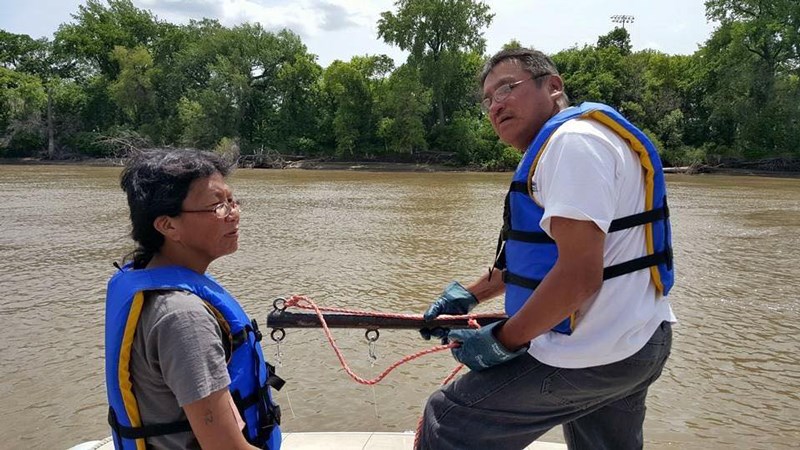It’s been a year since the Drag the Red project started, where a group of volunteers have been searching land near the Red River, as well as in the water for any evidence to any missing or murdered individual.
Bernadette Smith, the lead organizer of the effort, says this started when she received a call about Tina Fontaine being found in the river. “I got a call from my sister telling me what had happened, that they pulled this young girl out of the river, wrapped in a garbage bag, disposed of like she was garbage, like no one cared about her.”
After that call it was decided it was time for the river to be dragged, and change needed to happen. Smith’s sister Claudette Osborne has also been missing since July 2008, which makes the efforts more personal for her.
This year forensic anthropologists trained the volunteers in hope to better the search. “If someone finds what they think is a bone they take a picture and send it to me, then I send it to the anthropologists. They then respond to whether they think its non-human, or that they need to invest it further. That’s when police pick it up,” Smith continued by saying they’ve found bones, hair, skin, different clothing items they thought had blood on them, which has warranted the police to do diving searches in the river.
Currently the searches happen in a boat, which the volunteers were able to purchase this year through a go-fund-me campaign as well as a bingo night. “When we’re doing the water dragging we usually have three to four people in a boat. We have a dragging bar, that is a steel bar, that’s three feet long, that has some points where you can clip onto, we have four hooks where we hook on the steel cable. At the end we have a hook. There could be up to 16 hooks on one bar,” explained Smith.
Although the searches have been successful Smith says they’re running low on funds and volunteers. “We certainly would like to have two teams out per day. We usually have four to five on each team. They do on each side of the river, and they comb from a certain area to a certain area, while marking where they were. We are looking for funds because we have to gas the boat, and our dragging bars cost about anywhere from 50 to 80 dollars to make. We are not able to use one bar a season, because we lose equipment and sometimes our hooks get bent.” Funds also go to feeding the volunteers during the search as well as a meal after.
Searches have been happening two to four times a week this year, for about three hours at a time. Last year the volunteers continued their search until the end of October, and Smith says they’ll continue until the weather turns.
When the water levels lower Smith says they will do an onshore search before the snow stops their efforts.
Drag the Red will continue every year as long as the volunteers are there Smith finished off by saying. For anyone who would like to volunteer their time, or donate money or food visit the Drag the Red facebook page for more information.




